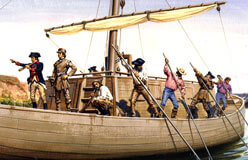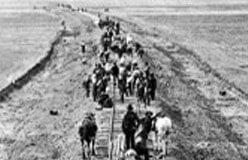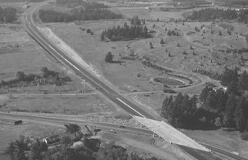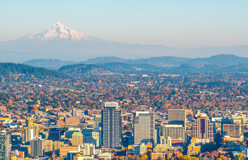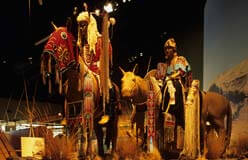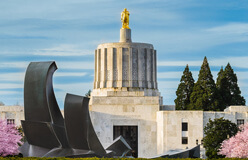In the East, men like Samuel Adams and John Hancock kept the colonists in a constant state of anger over British rule, and groups of colonists got ready to fight.
The colonists stored gunpowder and other supplies in Concord, a village northwest of Boston. British soldiers quietly marched out of Boston on April 18, 1775. At the same time, riders Paul Revere and William Dawes took separate routes to tell people in the countryside the British were coming. When the British got to Lexington on April 19, the minutemen were waiting. As the two groups faced off, a shot rang out; the American Revolution had begun!
Years later, the United States found itself at war again. First, with Great Britain, in the War of 1812, and then in an internal civil war. In 1865, the Civil War ended with victory for the Union (North), and the country stayed together. After the war, reconstruction, a painful healing process, began. Throughout the 19th century, the United States grew as people moved west . . . many of them to Oregon, creating tensions with the Native Americans already there.


